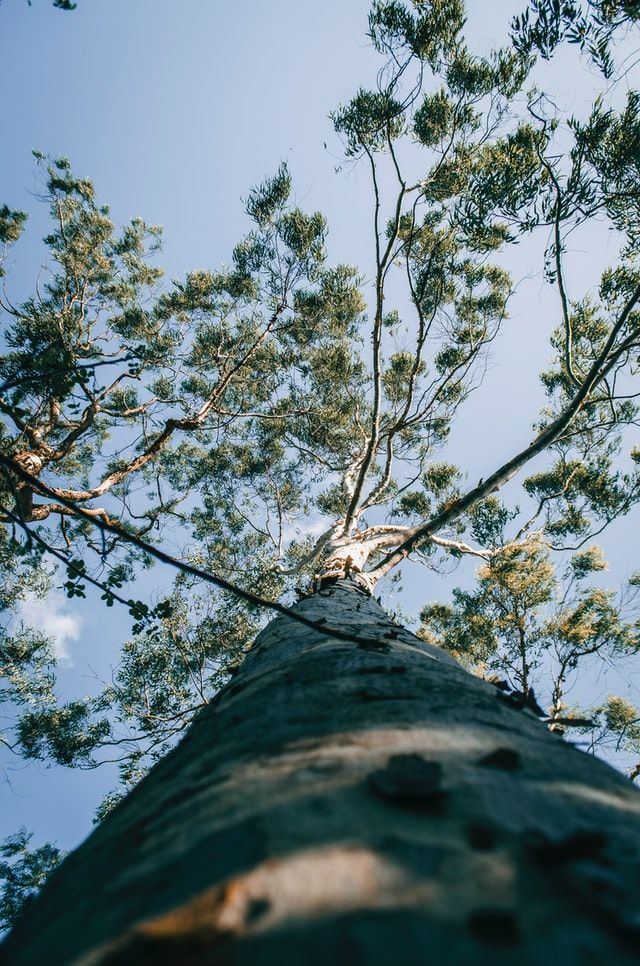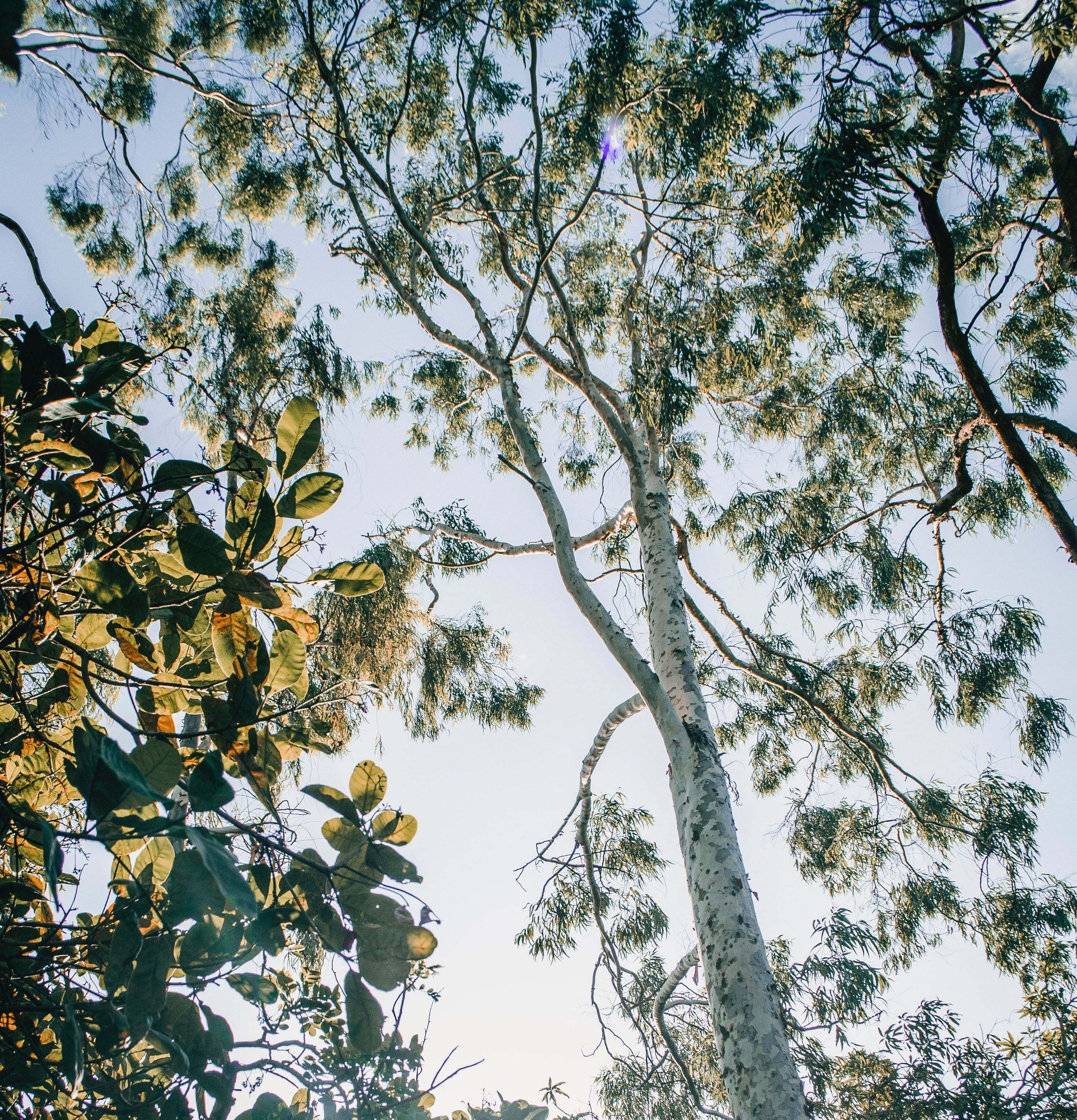Looking to use a Eucalyptus tree for firewood? It can be a unique smelling, high heat output wood. Check out our guide below to find out what you can expect.
Eucalyptus Firewood Details
BTU: At least 34.5 heat per cord (million BTUs)
Weight: 7320 (green)
Seasoning Time: 18 months
Resin / Sap Content: Low
Splitting Difficulty: Difficult
Smoke: Low
Smell: Sweet and medicinal
Varieties of Eucalyptus
If you're looking for firewood, you have more than a few options. And one choice that some people overlook is eucalyptus firewood. Although there are over 700 varieties of eucalyptus trees, most of them are in Australia. In the U.S, eucalyptus trees only grow in California and the southeastern regions. Originally, settlers brought the trees onto the country.
Two popular varieties of eucalyptus include the sugar gum tree and the red-spotter gum tree. Each tree grows to approximately 60 feet tall. That said, you probably won't have much choice when it comes to eucalyptus firewood. This type of firewood is more difficult to come by, so you need to take what you can get.
BTUs of Eucalyptus
Because there are so many types of eucalyptus, it's hard to say exactly how many BTUs per cord the firewood has. Some sources claim 34.5 BTUs, while others say it's much higher. In fact, you can compare eucalyptus to oak, which is one of the best woods for firewood.
Overall, eucalyptus burns hot and has a very strong flame. If you're looking for a firewood that can be a primary heat source, eucalyptus could be an excellent choice. It produces good coals and can keep your home warm for an extended period.
Seasoning Time for Eucalyptus Firewood
Eucalyptus has a relatively high moisture content as well as oil in the wood. As a result, seasoning this type of firewood takes time. Generally, it takes a minimum of 18 months to effectively season the wood. It could take as long as two years to season it. Before you stack your wood, make sure the firewood rack is in the optimal location.
Ideally, the wood should have a moisture content below 20%. Seasoned eucalyptus makes for excellent firewood, but green eucalyptus is one of the worst things you can burn. The combination of oil and water makes it extremely smoky. For the best results, use a moisture meter to check the moisture of your eucalyptus wood.
Sap Content of Eucalyptus
One of the best things about eucalyptus is the lack of sap. There are certain varieties of the wood that have no sap at all, while others produce some sap. In any case, processing and burning eucalyptus is a clean job.
Unlike pine and other types of trees, eucalyptus doesn't ooze out sap. When people rave about eucalyptus, it's usually for the wood's high heat output and low sap.
Smoke Output from Eucalyptus
If you season eucalyptus well, you won't have an issue with smoke. The biggest problem you might encounter is popping and sparking. At times, oil pockets in the wood cause a log to spark.
By using a screen, you can prevent this from being an issue. Furthermore, your wood won't pop and spark if you allow it to season for a lengthy period. Sparking aside, smoke production with eucalyptus is minimal.
If you speak to a chimney sweep, they might advise you against using eucalyptus. This is because the wood has a high oil content, which some people regard as dangerous. In reality, seasoning eucalyptus takes away much of the danger.
Eucalyptus has a bad rap as a firewood because it needs to season so long to be considered safe. However, the excellent heat output and availability of eucalyptus in some regions of the country make it an excellent choice. Creosote production is moderate, when the wood is properly seasoned. Regardless of your choice of wood, you need to clean your chimney regularly to prevent creosote from building up.
Smell of Eucalyptus
As far as odor goes, burning eucalyptus is extremely pleasant. You could describe the smell as sweet, if not somewhat medicinal. It's not overpowering and most people enjoy the aroma of the wood.
Eucalyptus FAQ
Ready to learn more? Check out this FAQ.
Isn't Eucalyptus Poisonous?
It's a common misconception that eucalyptus firewood is dangerous, or that the smoke is poisonous. If you tried to chew on a bundle of eucalyptus leaves, you could become ill. But that only occurs when you ingest a significant amount of leaves. The smoke of the wood is non-toxic and shouldn't be a concern.
In case you're wondering, signs of eucalyptus poisoning include stomach pain, dizziness, and nausea. As long as you don't keep the leaves on your firewood, you don't need to worry about this.
Is It Hard to Split Eucalyptus Firewood?
One of the disadvantages of eucalyptus is the fact that it's difficult to process. As a hardwood, eucalyptus requires some power to split. Once it's seasoned, the wood is almost impossible to split. Your best chance of splitting eucalyptus is to do so before you season it. Once the grain dries, it twists and becomes too tough to split.
To make your life easier, split eucalyptus approximately one week after you cut it. Wait for cracks in the wood to form, and then start cutting. At this point, you should be able to split the wood by hand.
Why Isn't Eucalyptus More Popular?
With such a high heat output, you might think that eucalyptus is a popular option for firewood. However, this isn't the case. There are a few reasons eucalyptus hasn't taken off as one of the top types of wood for fires.
First, there are the misconceptions. People think that the smoke is poisonous. This is just a fallacy, and shouldn't stop you from using the firewood.
Second, there's the fact that the wood sparks. But this doesn't need to stop you from using the wood. As long as you use a fireplace screen, sparks won't be an issue. Over time, you might find comfort in the popping of the firewood.
Lastly, there's the lack of availability. In specific regions, eucalyptus is prevalent. But you can't find it in the central U.S or the northeastern states. It's much harder to find than other common types of firewood.



